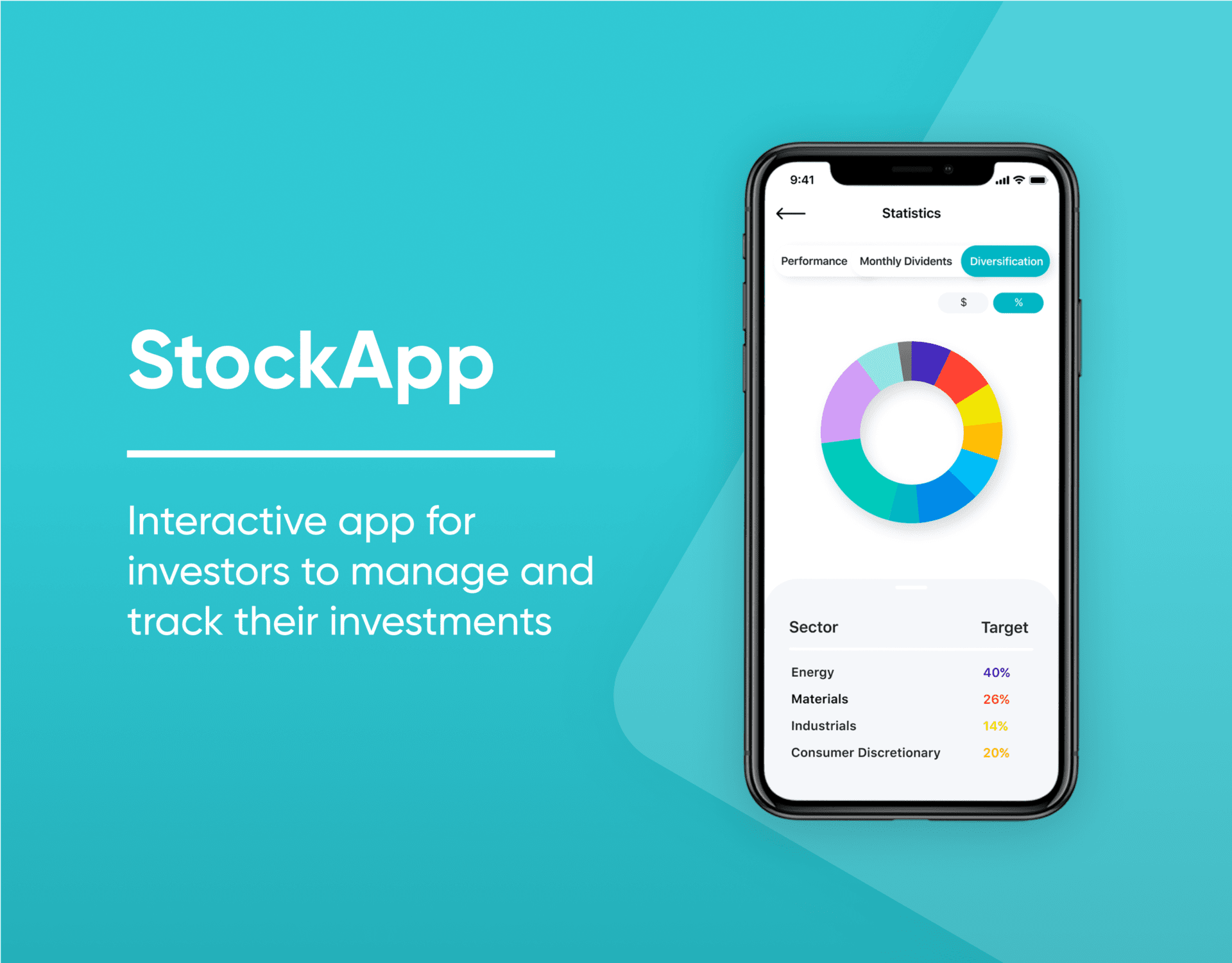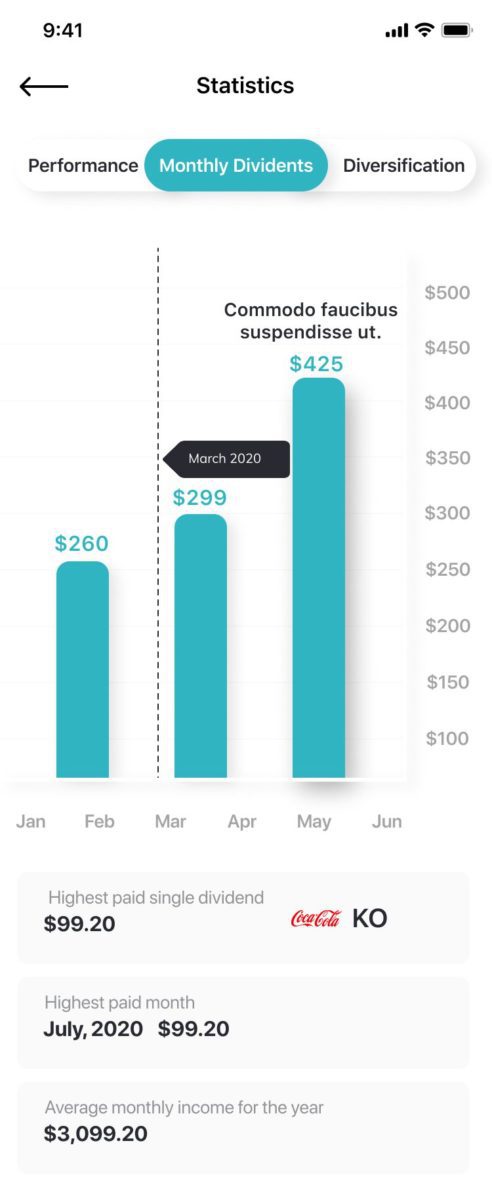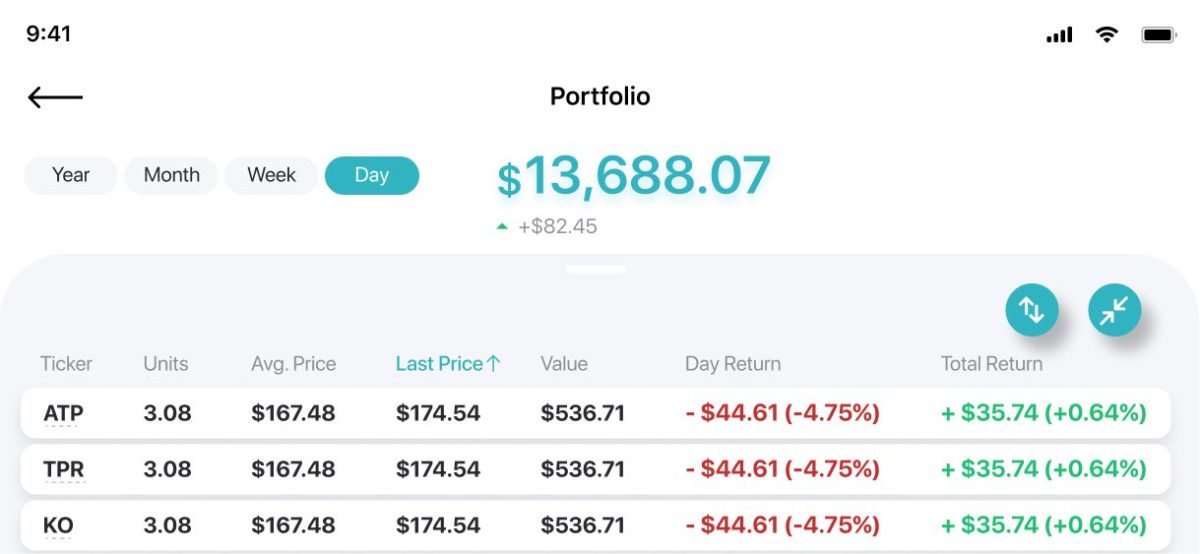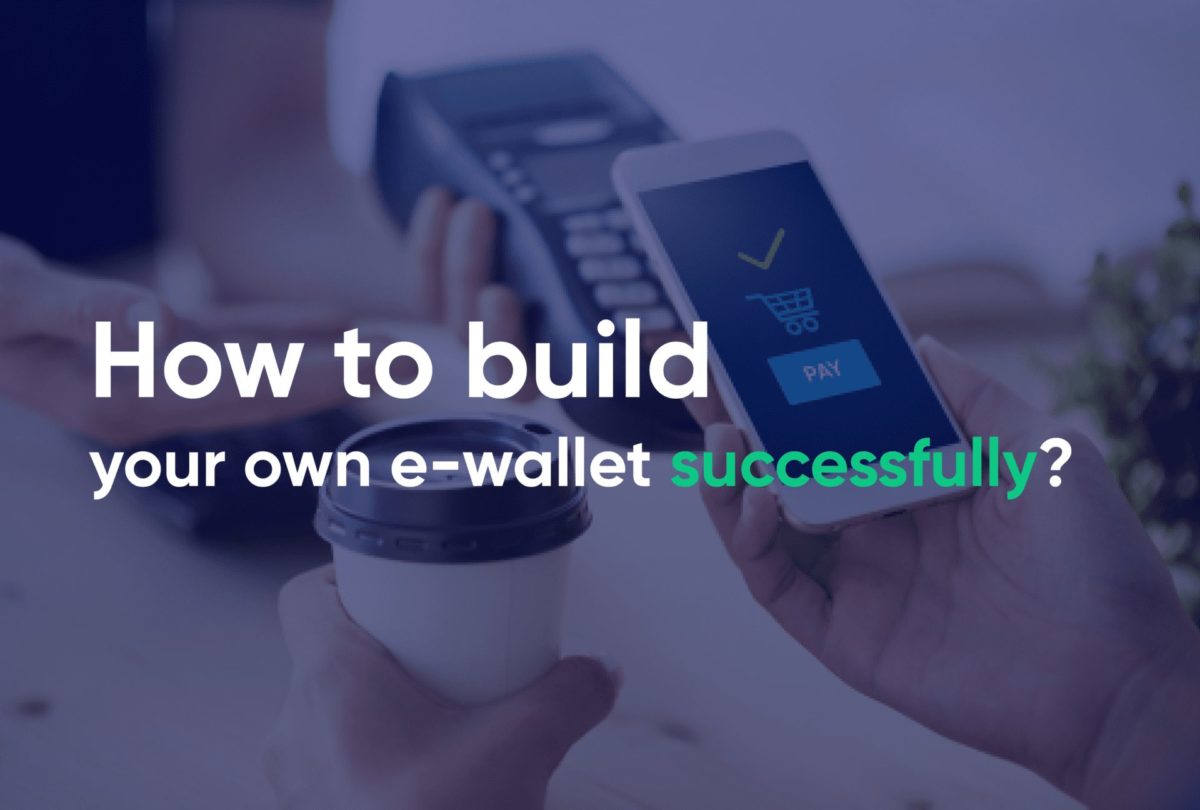Content
What is e-wallet in 2024?
Cold hard cash used to be king. But in a world where you can pay someone by swiping a few times and clicking a button, consumers opt to store and transfer money online instead.
As a result, more and more people choose to use e-wallets or digital wallets – the services that store a person’s payment information.
This is the primary reason why the e-wallets market is growing exponentially, with no intention to stop. In the USA alone, the market is expected to reach $80B by 2026 and expand at a CAGR of 20% in the forecasted period.
However, the question remains – how to build your own e-wallet app? What are the main benefits and challenges when you develop a mobile wallet? What are the key stages you need to undergo to make a wallet app? How much does it cost to create an e-wallet? We will answer these and other questions in this article.
Key Benefits of e-Wallet Development for Customers
As was already mentioned earlier in this guide, e-wallet software development has a number of weighty benefits that businesses should consider. The advantages of such solutions can be divided into the benefits for customers and benefits for businesses themselves.
So, let’s take a moment to clarify all that is there for both sides, starting with the perks e-wallets offer to customers.
Fast Transactions
A few years ago, there was an emerging trend for contactless card payments. This method of checking out appeared to be faster and much more convenient than using a regular card. Now, e-wallets take the game to the next level. With this technology, consumers have all their payment information right on their smartphones. So, all it takes to make a purchase is to pull out a smartphone from your pocket and authorize the payment with touch or Face ID. It’s much faster than looking for the right card, entering a pin, etc.
Wide-Ranging Functionality
One of the best things about digital wallet development for customers is that such solutions give them almost limitless opportunities. e-Wallet apps enable users to make purchases in physical and online stores. They allow paying for various online services and even set up automatic payments for more convenience.
On top of that, there is always the possibility to make instant payments to other digital wallets, as well as to and from actual bank accounts, and even split bills between multiple users. And the best part is the possibility to get cashback and rewards for your purchases. As you can see, the functionality can be very extensive.
Cashless Payments
Giving you the ability to pay anywhere and for any kind of product and service, e-wallets don’t require any cash. All users need to do is connect their digital wallets to a credit card and they can go fully cashless in all their payments.
Multi-Currency Options
One thing that really distinguishes digital payments from bank and cash ones is that the first one lets you switch between currencies with no effort. Multi-currency support is a common tendency in digital wallet development. It gives you the opportunity to manage currencies right from your smartphone and make/receive payments in any currency, including cryptocurrencies.
Lower Transactions Fees
The fees customers have to pay when making purchases with their digital wallets vary depending on the solution provider, the user’s bank, and many other factors. However, on pretty much any occasion, the transaction fees in e-wallets are significantly lower than those implied by other payment methods. So, this gives customers an opportunity to significantly save their money.
Key Benefits of e-Wallet Development for Businesses
So, you already know about the benefits of digital wallet development for customers. Now, what is there for businesses?
Increased Sales
The biggest benefit of e-wallet software development offered to businesses is the opportunity to increase sales. Companies in the fintech industry can drive more customers and eventually boost their revenues by creating secure and functional e-wallet solutions with excellent customer experiences.
Enhanced Security
These days, users demand superior security in everything they do, including financial transactions. And e-wallets deliver this. The security technologies and best practices used for e-wallet software development are becoming more and more sophisticated, letting businesses ensure better financial security.
Improved Customer Experience
The security, accessibility, and exceptional convenience of digital wallets make such solutions so tempting for modern users. Such solutions simplify many of the well-known complexities of traditional financial services. So, by investing in digital wallet development, businesses can offer their customers better experiences.
Long-Term Revenue
As was already mentioned, the e-wallets market is growing at an impressive CAGR of 20% and seems to have no intention to stop. This means that businesses that invest in digital wallet development today will get lasting benefits in the future. Developing such solutions will help them stay more competitive and generate long-term revenues.
Technologies Required for Efficient Digital Wallet Development
Now that you know about all the benefits, you must be wondering how to develop digital wallet yourself. Later in our guide, we will give you a step-by-step guide.
But, first, let’s define the core technologies that are required for developing a solid solution.
NFC Technology
Contactless NFC technology plays the biggest role in e-wallet development. This technology allows secure communication between a smartphone and POS devices, letting users make payments from their digital wallets quickly, securely, and seamlessly.
Bluetooth and iBeacon
The other two core technologies that must be adopted for every e-wallet solution are Bluetooth and iBeacon. The most recent iteration, Bluetooth 4.0, features a low-power variant referred to as Bluetooth LE. This technology allows two devices (i.g. a smartphone and a cash register) to connect when they are in each other’s range. This can allow making purchases even without pulling a phone out of the pocket. And iBeacon will let merchants deliver personalized offers and discount coupons to customers when they are in the range of radio beacons.
QR Codes
The next core technology is there to create more seamless payment experiences. QR codes are already actively added to bills by merchants to let customers quickly scan them and pay. So, it’s vital that every e-wallet solution supports this technology.
APIs
The adoption of APIs in digital wallets allows quick and seamless transfer of funds to and from the user’s account. With the help of APIs, users can natively connect their bank accounts or other financial systems to their digital wallets, thus, bringing dollars to their accounts.
SDKs
Choosing the right SDKs will let you integrate tokenization and create a branded service. Also, this technology allows provisioning cards seamlessly and issuing merchants and banks quickly.
Cloud Services
Cloud technology is one of the major enablers of e-wallets. Cloud services come with in-built data security for better safety. Also, such services allow quick performance of intensive computing processes and leave space for on-demand scalability.
How to Develop a Digital Wallet Step by Step?
Finally, now that you know all the core details of e-wallet development, we can get to the most exciting part.
In the guide below, we will tell you how to develop digital wallet one step at a time.
Step 1: Hire a Professional Team
First and foremost, to engage in digital wallet development, you need a team of qualified experts who can bring your ideas to life. Finding a reliable and professional team isn’t easy. But since you already know about extensive RewiSoft experience in software development for the financial industry, you should have a reliable development team in mind.
Step 2: Choose the Type of Wallet
When you have a professional team, you need to define what kind of wallet you are planning to create. Namely, there are three options to choose from: open, semi-closed, and closed wallets.
An open wallet is accepted at most retailers and allows all types of purchases and services (sometimes, even ATM withdrawals). Semi-closed and closed wallets, on the other hand, allow only certain transactions with a pre-determined group of retailers or one particular retailer that issued the wallet.
Step 3: Narrow Your Target Audience and Analyze Requirements
During the next stage of the e-wallet development process, you need to analyze your target audience and narrow it down. You need to define who your future app is meant for. Based on this, you should identify and analyze your core requirements.
Step 4: Start With MVP
An MVP or a minimum viable product is an early version of an app that only includes a bare minimum of features needed to test the concept and receive feedback from early customers. Creating an MVP first is always a great idea because it lets you win investors or stakeholders, test the viability of your idea, test the market demand, define a suitable monetization strategy, and define the usability and UX of your future app. And it’s cost-efficient too.
Step 5: Choose Tech Stack
When you have all the requirements and an MVP of your e-wallet, the next stage requires defining the perfect tech stack that will be used for the development of your solution. Typically, the tech stack you choose will depend on the type of app, its core idea, features, and other requirements.
Step 6: Design and Prototype
When everything is ready, the expert designers will create a flawless design for your future app and build a prototype. Later in this guide, we will tell you how to design a great digital wallet step by step.
Step 7: Build and Test
Finally, when the design is ready, the experts you hired can move specifically to digital wallet development. At this stage, the team of professional developers will transform an MVP and prepared design into a functional and good-looking app. When they are done, the product will be passed over to the QA team which will test it for usability, user experience, functionality, bugs, and other things.
Step 8: Deploy and Support
When the final version of your app is ready, the work doesn’t stop there. The next stage involves deploying the created solution. Simply put, this is the stage during which you will make your app available for use. And even that’s not all. After it’s deployed, there will still be the need for support and maintenance to ensure that your solution remains effective, bug-free, and helpful to users.
Security Considerations for e-Wallet Software Development
So, you already know how to develop digital wallet. That must be it, right? – Not really.
Earlier we told you about the importance of securing digital wallet solutions with sophisticated security features. So, one more thing we’d like to focus on in this guide is how to create a secure solution.
Here are the top seven security best practices to use in digital wallet development:
- Passwords – The most obvious security practice implies integrating password use into your app. Even though it may sound a little outdated, this trick still works great. Thus, when developing your solution, make sure that there will be passwords that users will have to use at various stages of working with their accounts. And integrate a rejection feature to ensure that users won’t create too simple or short passwords.
- Point-to-Point Encryption (P2PE) – Another best practice you should use to ensure security is P2PE. This technology allows the integration of end-to-end protection and encryption of all the data related to every transaction that takes place when a user connects their phones to a PoS device.
- Tokenization – In a nutshell, tokenization is a sophisticated crypto protection technology. It allows the protection of all digital wallet payments through robust data encryption. Tokens used in this technology are made of a combination of symbols that don’t store any real financial information and, thus, are pretty much useless for scams.
- Two-Factor Authentication – The next feature that will help you add another layer of security to your app is two-factor authentication (also known as two-step verification or 2FA). With this feature, users will be able to authorize in the system or complete certain actions only by verifying their identities in two steps, for example, with a password and an SMS code sent to their phone number. This feature can prevent many security issues.
- Files of Keys – This technology implies that every user receives their own files of keys when registering in the app’s system. These files store the unique keys to a particular wallet, without which scams and frauds won’t be able to access the wallet and steal money, even if they get the password right.
- Biometric Protection – The use of biometric protection is incredibly common in digital wallets because of the high level of security offered by this method. In a nutshell, this security feature implies that users will have to authorize every payment they make with their fingerprint or face recognition. This feature ensures that no one else will be able to use the wallet even if the user’s phone gets stolen.
- Account Blocking – Finally, one more security feature you might want to have in your app is account blocking. This feature gives users (as well as the system itself) an opportunity to block a particular account if it shows any suspicious activity. This feature can prevent the loss of money in the case of unauthorized access to the wallet.
That’s it. These seven security practices are time-tested and proven to be effective in e-wallet software development.
Build your own e-wallet: Trends and Problems
There are many platforms in the market that offer the services of money transfer, cost management, etc. They differ in terms of currencies they work with, top-up options, payment methods, fees, and security level. However, there are some trends that the market witnesses now. Let’s view them in more detail.
AI and machine learning advantage
AI and machine learning are widely used in the finance industry, and e-wallets are no exception. With the help of AI and ML, users of your e-wallet app can benefit from customized analytics, plan their expenses, etc.
The biometrics security
Plenty of banking apps already use biometric data (e.g., face recognition, fingerprints access) to add the extra security level. So, it is the general trend in the fintech industry.
Smart voice assistant for online payments
Voice payment technology requires your device to be linked to a credit card. With this technology, you will be able to give your smartphone voice commands to pay without opening.
NFC (Near Field Communication) for the smooth payment process
NFC ensures data protection, not requiring costly changes to the payment processing infrastructure. This approach protects user credentials, provides better user control, and supports remote transactions.
Wallet app development is no easy task: it goes hand in hand with a range of problems. They are, for instance, finance industry regulation, third-party integrations, security, etc. Let’s view these challenges and ways to mitigate them in more detail.
Create e-wallet app: Main Challenges
The finance sphere strives for fraud detection and prevention by all means possible. Technology is one of such ways. Yes, banks and financial institutions use Artificial Intelligence, Machine Learning, Big Data, Data Analytics to prevent fraud from happening. When you build your own e-wallet, it is a good idea to implement these technologies.
What’s more, there are some general industry rules you must follow in order to get accreditation and trust when you build your own e-wallet. They are industry regulations and security regulations in the first place. Let’s take a closer look together.
Keep in mind the industry regulations
When you build your own e-wallet, the main difficulty with industry regulation is that they differ across countries. But let’s take USA-based regulations as an example here.
There are five abbreviations that all the money-dealing businesses in the US should be familiar with. They are CFPB – Consumer Financial Protection Bureau, CFTC – Commodity Futures Trading Commission, FinCEN – Financial Crimes Enforcement Network, BSA – Bank Secrecy Act, and AML – anti-money-laundering laws.
When it comes to cryptocurrency, there is no federal law in the US aimed at regulating crypto exchange or storage. However, businesses that are “money transmitters” fall under FinCEN regulation and have to register as “money services business” and comply with BSA and AML requirements. So, keep that in mind when you build your own e-wallet.
Make security your top priority
When you build your own e-wallet, there are three significant security precautions you have to implement. They are multiple-factor authentication, data backups, and how your users should and should not interface with the technology.
The first one is a way of fraud prevention, the second is required not to lose your in case of your mobile device malfunction, and the third mitigates one of the most common cybersecurity threats – the lack of user awareness.
However, there is something that boosts user awareness when you build your own e-wallet – namely, the onboarding process.
Ensure the easy onboarding
Onboarding is critical, while it explains how the app functions and its features. What’s more, quality onboarding influences the user experience and allures more users of your application.
When onboarding the users of your e-wallet, you should provide quality tutorials, in-depth articles, pop-up hints, and FAQ sections within the app. Also, it is a good idea to add security quizzes and information about how to address cybersecurity threats.
Create a smooth user experience
According to some sources, 72% of the users give up using an app if they don’t understand how to operate it right away. So, user experience is critical when you build the e-wallet app. Also, UX creates the unique value of your product and helps create a loyal user base.
Build your own e-wallet: RewiSoft experience
We at RewiSoft have vast experience working with businesses in the finance industry. For instance, we contributed to the development of an investment solution StockApp. We have designed an app for them that helps their customers track their investments quickly.


The main challenge was to create an app simple enough for investors-beginners to use and have enough features to satisfy experienced users’ needs.
As a result of this cooperation, we managed to create a UX/UI design that allows investors to view data on holdings with current prices, daily changes in value, and its overall percentage weight.


Using the app, investors can monitor the overall portfolio performance via interactive charts to see the portfolio’s total return by day, month, week, and year.


If you want to join our clients and build your own e-wallet, you need to know the key features that your application should have. Let’s take a look.
How to create a wallet app: Top Features


Stock App
Besides the features, we will cover in this section, keep in mind the importance of security. Yes, data and transaction security is of utmost importance when you create an e-wallet app. So, add one-time passwords (OTPs) for user identification, fingerprint logins, dual verification, and features like this to safeguard authorized access.
Transfer between bank accounts
Quick money transfers are one of the key reasons why people choose online banking over traditional. So, this feature is of utmost importance.
Cashback
Many banking apps have a cashback feature – percent you receive back for purchase in a certain store or a specific category (beauty, books, etc.) Such a feature encourages your users to use the wallet more frequently.
Expenditure and income statistics
Personalized insights and statistics are engaging for the e-wallet app users. It will help them track their incomes and expenses. With the proper AI integration, e-wallets can analyze spendings, categorize expenses, budget, etc., to offer insights and recommendations.
Bill splitting
Bill splitting is a helpful feature that can really boost your service. For instance, after implementing it, Google Wallet has seen a surge in weekly transactions and new users. Basically, your users should be able to pick any sum, add the people they need to split it with, choose how to divide it up, and receive a request for their share of the total.
Bonuses and rewards
Bonuses and rewards are critical for user retention and loyalty. Reward points, freebies, goodies keep users engaged and returning. Though banking and finance may seem a serious industry, gamification will not harm.
Working with cryptocurrency
Probably, we have all heard of the buzzwords, like blockchain, anonymity, the impossibility of hacking, decentralization, and others – often associated with cryptocurrency.
However, the most essential benefit about it is the complete ownership of your assets. No one except you has access to your cryptocurrency; neither banks nor the state can see your transactions. However, the benefit is also a challenge – if, for instance, your password was stolen – there is no one to help you.
There is a way to address this challenge, though – secure e-wallets with a feature of managing cryptocurrency. Such a wallet service takes over all the storage duties for your cryptocurrency, charging small transaction fees.
If you want to create an e-wallet app, keep in mind that security must be your top priority, so choose a vendor that complies with all the required cybersecurity regulations and takes time to educate its employees about cybersecurity threats and ways to mitigate them.
Also, you should inform your users that e-wallets should be used for trading, small amounts, and quick access, not storage.
Apart from the mentioned features, adding a contactless payment solution and currency conversion feature to your app is good.
Now, let’s continue with the main steps required in order to design your e-wallet app.
How to design an e-wallet app? Six steps
Due to our experience, we at RewiSoft have developed best practices and divided e-wallet app design into six major stages. Let’s scrutinize each of them.
Step 1: From idea to design requirements
The whole process starts with the idea. To transmit the idea clearly, you need to describe it in a brief format and show it to your design partner. Either on your own or together with your vendor, transform the brief into the design requirements.
Writing design requirements is a complex process that comprises many stages. Yes, you have to write your full project review, identify the main goals and target client, list the features you want to implement, describe the visual concept of your product, add your recommendation prohibitions, etc.
Our article about writing design requirements will help you with this complex task.
Step 2: From planning to the hiring process
With the idea and precise design requirements in place, you need to move to the hiring process. To realize it, you need to understand what professionals (business analysts, UI/UX designers, testers, developers, project managers, etc.) you need. How senior do they need to be? Compile a list and start interviewing.
You should also have a clear vision of what is to be done, how much time you plan to dedicate to the project, and an approximate budget. Hiring an outsourced team can save you up to 60% of costs without sacrificing quality when it comes to budget.
To find top-notch talent promptly – contact us! We have an individual approach to each client and project.
Step 3: Product discovery
Each successful project calls for a profound product discovery phase. It is needed to understand the market, the peculiarities of your product, etc.
For instance, we, at RewiSoft, perform the following activities at the product discovery phase:
- Assess business, user, and discovery goals;
- Perform stakeholder and user interviews;
- Set business, user, and discovery goals;
- Perform competitive analysis & SWOT analysis;
- Create user personas and user stories;
- Develop business model canvas and lean canvas;
- Make a customer journey map.
Each of these activities is critical to proceed to the next step – namely, UX design.
To succeed at this and the stages that follow, you need to partner with a trusted technology provider. Yes, product discovery and UI/UX design take time, effort, and experience.
Keep in mind, to avoid miscommunications, make sure to choose a partner eager to understand your goals and is ready to dedicate as much time to clarify all the aspects as possible and needed.
Step 4: UX design [Prototyping & Wireframe]
Similar to the UI that we will cover in the next paragraph, UX is about your e-wallet’s appearance and usability.
At this stage, information architecture, prototyping, and wireframing are the critical activities required at the stage of UX design. All of them influence how your e-wallet performs: is the app convenient, is it intuitive, is navigation easy to follow. What’s more, with the help of wireframing, you can visualize the concept cost-effectively and make changes with the least cost possible.
Take a look at how we realize it with our client StockApp:
Step 5: UI design
The next stage of development of your own e-wallet is called the UI design. The most important aspect about it is that UI design should be in line with the theme that UX designers have built. UI designers are responsible for delivering pages and screens, branding, interior layers, color schemes, and the overall appearance.
Among other services we provide, UI design was one of the critical services within our cooperation with StockApp.
Step 6: UX Lab & Testing
Typically, the testing phase requires the following activities: in-depth interviewing of focus groups, preparing assessment research, and generating usability reports.
To make this process as efficient as possible for our clients, RewiSoft has established a UX lab. The user gets a product’s prototype in RewiSoft lab. Due to specific eye-tracking equipment, the RewiSoft experts learn how the user acts when interacting with the product interface. After that, it is possible to analyze the natural user behavior and make changes to the product.
How much does it cost to build your own e-wallet?
The cost of designing an e-wallet can vary based on several factors, including the feature set and complexity of the project. Here’s a general overview of pricing:
- Simple Complexity Design: Starting at up to $8,000
- Medium Complexity Design: Ranges from $8,000 to $20,000
- High Complexity Design: From $20,000 and up
The final price will depend on your specific requirements and the scope of your project.
Like any other field, the prices for e-wallet design vary among regions, as costs of living differ significantly from region to region. Also, the price depends on the seniority level of the task performers, workload, the difficulty of a task, and a range of other factors.
Nevertheless, some general trends describe the salary expectation in each market.
North American professionals are at the top of the market with the highest rates.
Rates in Western Europe are slightly lower than those in North America. Also, you should keep in mind that prices may differ drastically among countries in the region. For instance, rates in Spain are much lower than those in Switzerland.
The labor market in Eastern Europe presents an optimal price-quality ratio. It boasts a vast talent pool of over 1M experts, agencies, and companies of all sizes that offer versatile expertise. At the same time, the rates here are lower than in the US and Europe, as the cost of living is also lower.
The design and software development market in Asia is presented primarily by experts from India. The country boasts a large talent pool and the lowest prices worldwide. Although the quality of services there is hampered by the low level of digitalization in the country and cultural mismatch.
Also, the final cost depends on the technologies you use in the development process. We have gathered average prices by technology in Eastern Europe, Western Europe, South America, and Asia. However, keep in mind that all these are the average rates. You can get more accurate calculations here.
We’ll reply you in 8 working hours (CET)
Build your own e-wallet: Summary
E-wallet design is no easy task. It requires implementing a wide range of features, including transfer between bank accounts, cashback, custom statistics, bill splitting, etc.
The design of your own e-wallet is also complex. It takes six profound steps, each of them having its challenges and peculiarities.
But keep in mind that the development of the e-wallet gets more manageable if you partner with a reliable provider.








